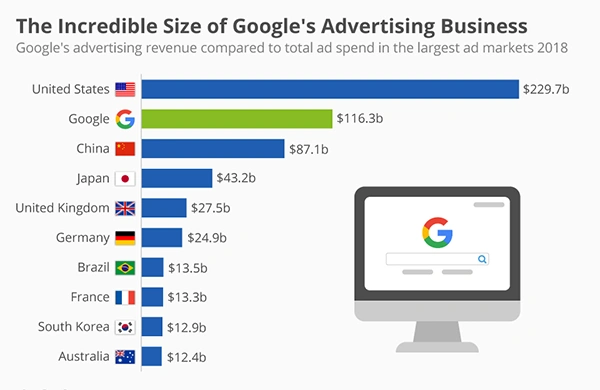Google Ads: What Are the Basic Checklists to Optimize PPC Campaigns Daily?
Do you remember the importance of the compass in Johnny Depp’s Pirates of the Caribbean movie?
Or, for instance, any ship sailor needs a compass to direct their ship in the right direction. Google Ads are that compass for you in the online marketing world.
Earlier, we knew it as AdWords, but now Google Ads is the supreme being in the digital space. If you make the best use of it, it’s easy to launch a business and take it to heights within a short time.
And if you don’t put it to the best use, you’ll be directionless and lost, despite putting efforts into growing the business.
So, let’s dive right into learning the basic checklists to help you optimize your PPC campaigns.
Two Pillars of Your Successful Ad Campaigns
Although we could have included these in the basic checklists as well, it is necessary to differentiate them from the rest. This will help us learn that keyword research and our campaign structure basically act as pillars in our PPC campaign management.
We have to ensure we put our best foot forward and keep making slight changes to these two to have our other basic checklists generate fruitful results.
Keyword Research and Selection
You may learn more about the target audience and the topics they’re interested in by monitoring search engine query data with tools. The two most popular tools are Google Keyword Planner and Semrush.
The ultimate goal here is to zero in on the keywords that the target audience is actually typing in search engines. Check out key metrics like keyword difficulty, volume per month, etc., before you select the target keywords.
Campaign Structure
Give a proper structure to your campaign. Not all of your target audience needs to see all the ads.
First, sort your audience into either different levels of the sales funnel or based on important demographics like age, gender, preferences, buying behavior, etc. Bring customer data into the picture, and you are good to go.
DID YOU KNOW?
50% of people who found a retailer site through paid ads are more likely to convert than those who found a site through an organic link.
6 Basic Checklists to Optimize Your PPC Campaign Daily
Create Compelling Ad Copy and Use Ad Extensions
Your ad copy is exactly like a sales pitch. You have an audience, and you have one chance to make a mark. Every word you put in the ad copy’s headline and description counts.
It’s necessary to keep it interesting and engaging. In just a few words, you have to provide all the necessary information to the audience. The end goal remains the same – to make people choose you and buy your product/service.
On the other hand, ad extensions are what keep you apart from your competitors. Their purpose is to offer more information to the intended audience.
It can be linked to the landing page, structured snippets, etc. They can also include a list and prices of the products you offer. This is very helpful for eCommerce websites.
Plan a Bidding and Budget Management
You have to plan carefully if you want to win an advertisement bid. Two key metrics, CPC (cost-per-click) and CPA (cost-per-acquisition), are like your left and right earlobes.
It’s possible to still listen with one ear, but it won’t look good on your face.
So, making the audience click on your landing page is the first step. However, getting them and making them buy from you is the ultimate goal of every business.
So, plan the budget by breaking it into small chunks like campaign cost, ad set cost, ad cost, per day spend, etc. And then run those advertisements perfectly.
Ad Quality and Landing Pages
Quality ads lead to genuine leads. And when potential customers click on your link, they expect a fast-loading, perfectly optimized landing page that has eye-catching visuals and appropriate text content.
You need a consistent branding effort in sync with the social media profiles and web pages.
But how do we define the quality of our ads?
Through the keywords we bid for and the performance of landing pages. With performance, we mean low bounce rates and more clicks on the landing page.
Are you wondering why a quality score is so vital for ads?
There are two predominant outcomes of a good quality score on a scale of 0 to 10 – better ad placement and low cost-per-mile (CPM).
Regular Monitoring and Testing
To regularly monitor and test your ad campaigns, these steps will provide you with an extra hand:
- Make sure that your daily ad spend is consistent with the ad types.
- Keep a tap on the click-through rate to learn if your ads are relevant to the audience you’re targeting.
- Look out for any top-performing and expensive keywords.
- Track where the ad has been positioned. You need to ensure that you rank at the top.
- Keep trying to learn about your audience’s preferences with A/B testing.
Tracking and Analytics
Now is the time to pay heed to the results.
You need to track the ads after they have completed their tenure. Then, analyze the overall performance of your campaign.
The number of conversions will have the most impact.
So, follow these 4 steps more often to keep a tab on your conversions.
- Define your conversions
- Generate the tracking code.
- Place the code to track the actions of your website visitors.
- Test and verify if it’s working properly.
Now, if you want to spearhead your ad campaigns, you need to link your Google Ads with your GA4 account to get a deeper understanding of your conversions. You will also learn about the opportunities you missed and work out new strategies to track them in your next campaigns.
Using the analytics data, you can optimize your campaigns by:
- Identifying high-performing keywords
- Refining your ad messaging
- Improving landing pages
- Ad scheduling
Seasonal Adjustments and Ongoing Optimization
On top of your advertising campaigns, you must be aware of different seasons and holidays. To do this, you need to launch specific campaigns for different seasons because of differences in the preferences of your target audience.
Here are some daily checklists to ensure a smooth transition from your existing campaigns to the seasonal ones.
- Optimize the keywords
- Refresh the Ad Copies
- Allocate your budget

Subtitle: Google’s Ads Revenue As Compared to The Total Ad Spend in The Largest Ad Markets
The Takeaways
Remember that building an effective digital advertising campaign takes time and work over time.
So, once you get the basic checklists right, you will get the best results without wasting your budget on irregular practices.
I hope you are now equipped with the simplified methods that can help you bring out the best in your ad campaigns.
The Challenges and Benefits of Removing Negative Online…
Unlock the Simplest Way to Access LaSRS Login…
Strategic Wins: How SafeOpt Can Boost Your Online…
5 Reasons Why Marketing Matters in Business?
The Crucial Role of Press Releases in a…
8 Best Tech Tips to Implement for Better…
Fax Machines in the Digital Age: A Sustainable…
Breaking Barriers: The Power of Business Translation Services
Why Do Businesses Need a Dedicated Mobile App?
The Role of Onboarding in Improving Employee Retention…
3 Major Benefits of Onsite IT Support
Effective Blogging Strategies for Business Growth












